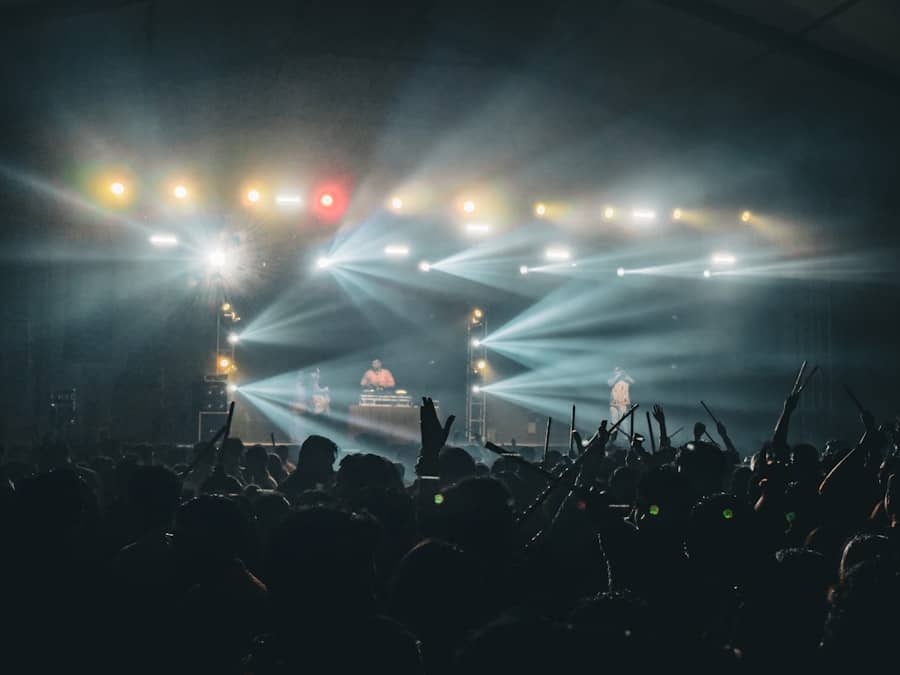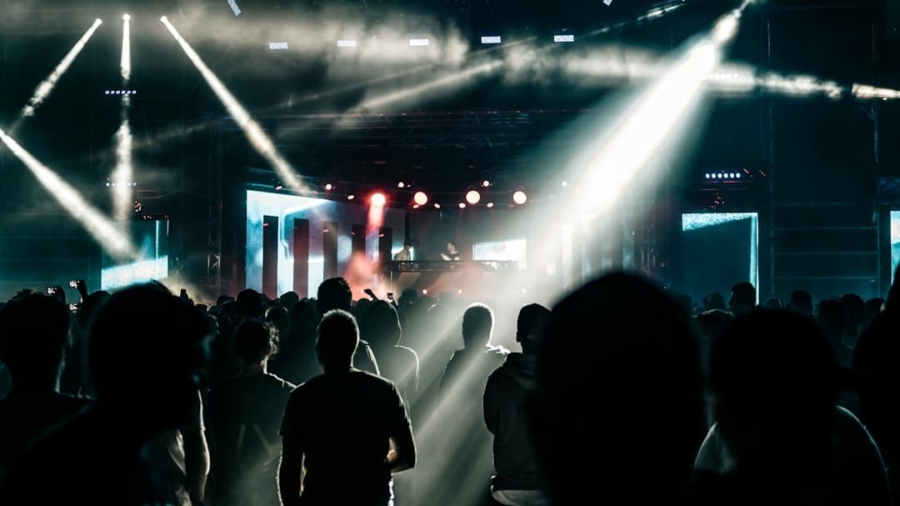Augmented Reality (AR) has emerged as a transformative technology in various sectors, and event planning is no exception. By overlaying digital information onto the physical world, AR enhances the way planners conceptualize, design, and execute events. This innovative approach not only streamlines the planning process but also enriches the attendee experience, making events more engaging and memorable.
As the demand for unique and immersive experiences grows, event planners are increasingly turning to AR to differentiate their offerings and create lasting impressions. The integration of AR into event planning is not merely a trend; it represents a fundamental shift in how events are conceived and experienced. With the ability to visualize complex layouts, simulate decor, and provide interactive elements, AR empowers planners to make informed decisions and optimize their resources.
This technology allows for a more collaborative approach, enabling stakeholders to visualize concepts in real-time and make adjustments on the fly. As we delve deeper into the various applications of AR in event planning, it becomes evident that this technology is reshaping the landscape of how events are organized and experienced.
Key Takeaways
- AR technology is revolutionizing event planning by offering immersive and interactive experiences for attendees.
- Virtual venue tours and layouts allow event planners to visualize and plan the event space more effectively.
- Interactive event design and decor using AR technology can create unique and engaging experiences for attendees.
- Personalized attendee experiences can be created through AR, offering customized content and interactions.
- Real-time event set-up and logistics using AR can streamline the planning and execution process, saving time and resources.
Virtual Venue Tours and Layouts
One of the most significant advantages of AR in event planning is the ability to conduct virtual venue tours. Traditionally, planners would need to physically visit multiple locations to assess their suitability for an event. However, with AR technology, potential venues can be explored from anywhere in the world.
By using AR applications, planners can superimpose digital models of venues onto their physical surroundings, allowing them to visualize how different spaces will accommodate their specific needs. This capability not only saves time but also reduces travel costs associated with site visits. Moreover, AR facilitates the creation of detailed layouts that can be manipulated in real-time.
Planners can experiment with different seating arrangements, stage placements, and decor elements without the need for physical alterations. For instance, a planner could use an AR app to visualize how a stage setup would look in a particular venue, adjusting dimensions and configurations until they find the perfect fit.
Interactive Event Design and Decor

AR technology also revolutionizes the way event design and decor are conceptualized and executed. Instead of relying solely on physical samples or mood boards, planners can use AR to create immersive visualizations of their design concepts. For example, an event planner could use AR to project a 3D model of a floral arrangement or lighting design directly onto the venue space.
This not only provides a more accurate representation of how the final product will look but also allows for immediate feedback from clients or team members. Additionally, AR can enhance the decor experience during the event itself. Attendees can use their smartphones or AR glasses to interact with various elements of the decor.
Imagine walking into a gala where the centerpieces come to life with animated visuals or where walls display dynamic art that changes throughout the evening. Such interactive elements not only captivate attendees but also encourage social sharing, as guests are likely to capture and post their experiences on social media platforms. This integration of technology into decor elevates the overall atmosphere of an event, making it more memorable and engaging.
Personalized Attendee Experiences
Personalization has become a cornerstone of successful event planning, and AR plays a pivotal role in tailoring experiences for individual attendees. By leveraging data collected from registration forms or previous interactions, planners can create customized content that resonates with each participant. For instance, upon arrival at an event, attendees could scan a QR code that triggers an AR experience tailored specifically to their interests or preferences.
This could include personalized agendas, recommendations for sessions to attend, or even interactive games designed to enhance networking opportunities. Furthermore, AR can facilitate deeper connections among attendees by providing interactive features that encourage engagement. For example, an AR application could allow participants to scan badges or business cards to access profiles that include professional backgrounds, interests, and social media links.
This not only streamlines networking but also fosters meaningful conversations by providing context about each attendee’s expertise and interests. By creating personalized experiences through AR, planners can enhance attendee satisfaction and foster a sense of community within the event.
Real-time Event Set-up and Logistics
The logistical challenges associated with event planning can be daunting, but AR offers solutions that streamline set-up processes and improve overall efficiency. During the set-up phase, planners can utilize AR tools to visualize how different elements will fit together in real-time. For instance, using AR glasses or mobile applications, teams can see digital overlays of furniture placements, audiovisual equipment setups, and signage arrangements before any physical items are moved into place.
This capability minimizes errors and ensures that every aspect of the event is executed according to plan. Moreover, AR can assist in coordinating logistics by providing real-time updates on various components of the event. For example, if a vendor is delayed in delivering equipment or supplies, planners can receive instant notifications through an AR interface that allows them to adjust their plans accordingly.
This level of responsiveness is crucial in maintaining a smooth flow during events where timing is everything. By integrating AR into logistical operations, planners can enhance their ability to adapt to unforeseen challenges while ensuring that every detail aligns with their vision.
Enhanced Sponsorship Opportunities

Breaking Free from Traditional Methods
Traditional sponsorship methods, such as static signage or promotional materials, often get lost in the noise of an event. However, with the advent of Augmented Reality (AR) technology, sponsors can now create immersive experiences that capture attendees’ attention and leave a lasting impression.
Interactive Experiences and Targeted Advertising
AR enables sponsors to develop interactive displays that allow attendees to engage with products or services through their smartphones. Moreover, AR provides valuable data on attendee interactions, allowing sponsors to refine their marketing strategies for future events. By tracking which elements of an AR experience garner the most engagement, sponsors can tailor their campaigns to maximize impact.
Data-Driven Sponsorship and Stronger Partnerships
The data collected from AR experiences can be used to enhance sponsorship value and foster stronger partnerships between brands and event organizers. For instance, if a particular product demonstration within an AR experience receives high levels of interaction, sponsors may choose to emphasize that aspect in future campaigns. This data-driven approach revolutionizes event sponsorship, providing a more effective and engaging way for brands to connect with attendees.
Seamless Event Marketing and Promotion
The marketing landscape has evolved significantly with the advent of digital technologies, and AR is at the forefront of this transformation in event promotion. Planners can leverage AR to create immersive marketing campaigns that capture potential attendees’ attention long before the event begins.
Moreover, AR can enhance ticketing experiences by providing buyers with interactive previews of what they will experience at the event. Imagine purchasing a ticket for a concert and receiving an AR-enabled confirmation email that allows you to visualize the stage setup or even hear snippets of performances from artists who will be featured. This level of engagement not only generates excitement but also encourages attendees to share their experiences on social media platforms, amplifying word-of-mouth marketing efforts.
Future Trends in AR for Event Planning
As technology continues to advance at a rapid pace, the future of AR in event planning holds immense potential for further innovation. One emerging trend is the integration of artificial intelligence (AI) with AR applications to create even more personalized experiences for attendees. AI algorithms could analyze attendee behavior and preferences in real-time, allowing for dynamic content delivery that adapts throughout the event based on individual interactions.
Another trend is the potential for hybrid events that seamlessly blend physical and virtual experiences through AR technology. As remote participation becomes increasingly common, planners may leverage AR to create immersive environments where virtual attendees feel as though they are part of the live experience. This could involve virtual reality (VR) elements combined with AR overlays that enhance engagement for both in-person and remote participants.
Furthermore, advancements in hardware technology may lead to more accessible AR experiences for attendees without requiring specialized devices or applications. As smartphones become more powerful and capable of supporting sophisticated AR applications natively, planners may find it easier to implement these technologies without significant barriers to entry for participants. In conclusion, augmented reality is poised to redefine event planning by enhancing visualization capabilities, personalizing attendee experiences, streamlining logistics, and creating innovative sponsorship opportunities.
As this technology continues to evolve, its integration into event planning will likely become more sophisticated and widespread, paving the way for unforgettable experiences that resonate with attendees long after the event concludes.
In the realm of event planning, augmented reality (AR) is revolutionizing the way professionals visualize and execute their ideas. A related article that delves into the technological advancements enhancing our digital experiences is Experience the Power of Samsung Galaxy Tab S8: The Ultimate Tablet. This piece explores the capabilities of the Samsung Galaxy Tab S8, a device that can significantly aid event planners by providing a powerful platform for AR applications. With its advanced features, the tablet supports seamless virtual previews, allowing planners to create immersive and interactive experiences for their clients.
FAQs
What is AR?
AR stands for Augmented Reality, which is a technology that superimposes digital information such as images, videos, or 3D models onto the real world environment.
How does AR enhance event planning?
AR enhances event planning by providing virtual previews of event spaces, allowing event planners to visualize and plan the layout, design, and decor of the event before it takes place.
What are the benefits of using AR for event planning?
Some benefits of using AR for event planning include improved visualization, better decision-making, cost savings, and enhanced client communication.
How does AR virtual previews work for event planning?
AR virtual previews work by using a mobile device or AR glasses to overlay digital representations of event spaces, decor, and furniture onto the real world environment, allowing event planners to see how the event will look before it is set up.
What are some examples of AR virtual previews for event planning?
Examples of AR virtual previews for event planning include visualizing event layouts, trying out different decor options, and experimenting with lighting and audiovisual setups.
Is AR widely used in event planning?
While AR is becoming more popular in event planning, it is not yet widely used across the industry. However, its potential for enhancing event planning is being recognized by event professionals.

